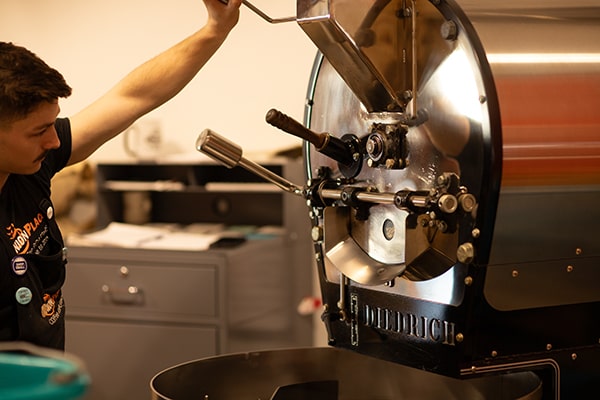Coffee is more than just a morning ritual; it’s an experience that engages our senses. The taste of coffee can vary significantly based on several factors, with roasting being one of the most crucial elements. In this blog post, we will explore how roasting affects the flavor profile of coffee and why fresh roasted coffee beans are essential for a delightful cup.
The Basics of Coffee Roasting
Roasting is the process of transforming green coffee beans into the aromatic, flavorful beans we use to brew our favorite beverages. This transformation occurs through a series of chemical reactions triggered by heat. During roasting, the beans undergo physical and chemical changes that develop their flavor, aroma, and color.
The Roasting Process
The roasting process typically involves three main stages: drying, browning, and development.
- Drying Stage: This initial phase removes moisture from the green beans. It usually lasts about 4-8 minutes at temperatures around 160°C (320°F). During this stage, you may notice a grassy smell as the moisture evaporates.
- Browning Stage: As temperatures rise to approximately 200°C (392°F), the Maillard reaction occurs. This reaction between amino acids and sugars creates complex flavors and aromas that contribute to the coffee’s overall profile.
- Development Stage: The final stage involves further caramelization of sugars and development of flavors as the beans reach their desired roast level—light, medium, or dark.
How Roasting Affects Flavor
The degree to which coffee beans are roasted has a profound impact on their flavor profile. Here’s how different roast levels influence taste:
Light Roast
Lightly roasted coffee retains much of its original flavor characteristics from the green bean. These coffees often have bright acidity and fruity or floral notes due to minimal caramelization of sugars during roasting. If you enjoy tasting distinct origin flavors in your cup, light roasts made from fresh roasted coffee beans are an excellent choice.
Medium Roast
Medium roasts strike a balance between acidity and body. They exhibit more sweetness than light roasts due to increased caramelization but still retain some original flavor notes from the bean’s origin. This roast level is popular among many coffee drinkers because it offers a well-rounded taste without overwhelming bitterness.
Dark Roast
Dark roasts undergo extensive caramelization and often develop smoky or bitter flavors due to prolonged exposure to heat. While some unique origin characteristics may be lost in dark roasts, they can produce rich body and deep flavors that many people enjoy—especially in espresso blends or when paired with milk.
Freshness Matters: Why Fresh Roasted Coffee Beans Are Key
One critical aspect often overlooked in discussions about roasting is freshness. Fresh roasted coffee beans are essential for achieving optimal flavor in your cup.
Flavor Deterioration Over Time
Once roasted, coffee beans begin to lose their freshness rapidly due to oxidation—a process where oxygen interacts with compounds within the bean, leading to stale flavors over time. Ideally, you should consume fresh roasted coffee within two weeks after roasting for maximum flavor potential.
Aroma Preservation
Freshly roasted beans emit volatile compounds responsible for their delightful aroma—one of the key indicators of quality in any cup of joe! As time passes after roasting, these aromatic compounds dissipate quickly; thus using fresh roasted coffee beans ensures you experience that enticing aroma every time you brew your favorite blend.
Brewing Techniques That Highlight Roast Profiles
To fully appreciate how roasting affects taste, it’s essential also to consider brewing methods that complement different roast levels:
- Pour-Over: This method allows for precise control over water temperature and flow rate—ideal for highlighting delicate notes found in light roasts.
- French Press: With its immersion brewing style, French press enhances body while maintaining some brightness—suitable for medium roasts.
- Espresso: Darker roasts shine here as they produce rich crema while balancing bitterness with sweetness—a perfect match for those who enjoy bold flavors!
Understanding how roasting affects coffee taste is vital for anyone looking to elevate their brewing experience—from casual drinkers seeking convenience, to connoisseurs searching for complexity! At Union Place Coffee Roasters, we roast in small batches so that you can savor every sip’s full potential—whether it be fruity brightness or deep richness depending on your preferred roast level! Shop our selection of roast levels: Light Roast, Medium Roast, and Dark Roast.


Customer Reviews